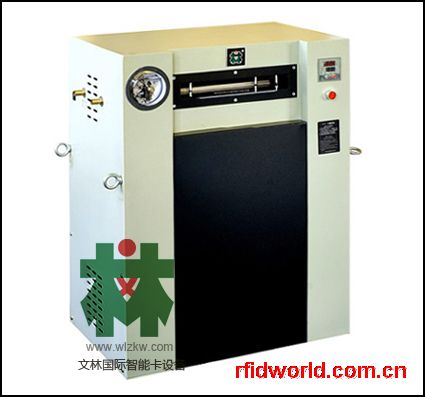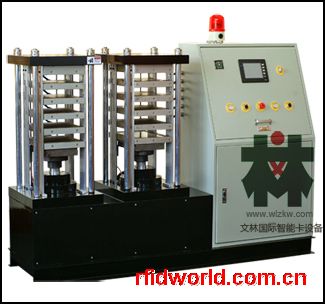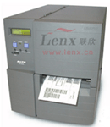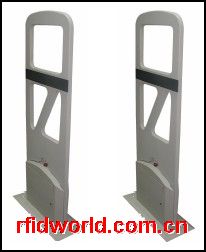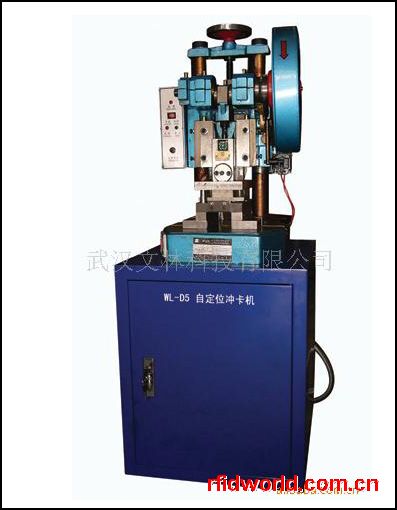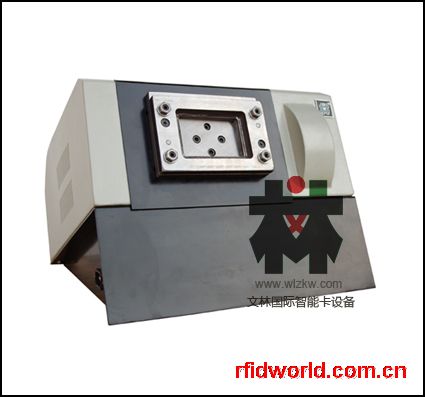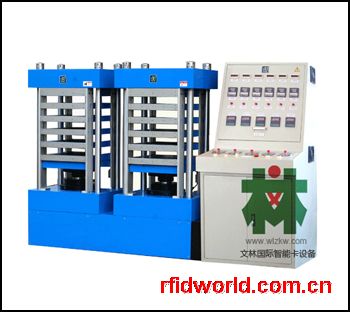|
Dick Cantwell is overseeing a major RFID project at one of Gillette s distribution centers. The goal: foster a new culture of innovation to achieve dramatic efficiencies within the supply chain.
By Mark Roberti For a little more than 100 years, The Gillette Company has been famous for top-quality products and world-class marketing. The company’s brands—Mach3 and Venus razors, Right Guard antiperspirant, Duracell batteries, Oral-B toothbrushes and Braun appliances, to name a few—are among the best known in the world. But Gillette hasn’t been noted for being in the vanguard of technology innovators within its operations—until now. The company has staked out a leadership position in the use of RFID, specifically the Electronic Product Code (EPC) developed by the Auto-ID Center.
[page]
In January 2003, Gillette ordered 500 million Class 1 EPC tags from Alien Technology, a startup working with the Auto-ID Center. It was the largest RFID order ever placed. Gillette is using the tags in one of the biggest EPC project to date, tagging all pallets and cases of its Venus women’s razors. The company’s goal: To understand how EPC technology can be used to achieve “breakthrough” benefits in its supply chain operations. Gillette’s position at the forefront of the EPC movement is somewhat unusual, concedes Dick Cantwell, the vice president who has been heading Gillette’s RFID efforts for the past five years. “It’s always easier to look in the rearview mirror to see how things were done in the past or to stand back and watch how others have solved a problem,” he says. “In the case of EPC technology, we’re in a pioneering position, and we have to have a vision of the future and work back from that point.” The company’s interest in EPC technology stems from a problem that is caused, ironically, by the success of its brands. Gillette razors, batteries and toothbrushes are so popular that the company, which puts 11 billion items into the retail supply chain annually, has a hard time delivering replenishments to retail customers precisely when they need them and, just as important, making sure that those orders are accurate and arrive where they should in the quantity requested. Gillette’s problem is not unique. Manufacturers and retailers worldwide face the same issues. The truth is that the supply chain is not as reliable as it needs to be. Every year, billions of dollars are lost because products aren’t shipped on time or in the right quantities. Sometimes the wrong products are shipped or the shipments get accidentally misdirected. On occasion, shipments get miscounted or miscoded on the receiving end. Sometimes the loss is created by theft, which can occur at any point in the supply chain. In the late 1990s, Gillette began looking for a way to get better information about where its goods were in the supply chain so the company could ensure products were always where they were supposed to be and could better meet demand. Gillette became a founding sponsor of the Auto-ID Center, which was set up to develop the EPC Network, a low-cost RFID system designed to let companies track goods in open supply chains. Gillette’s Cantwell became the chairman of the Auto-ID Center’s board of overseers, a key role that put him in a position to influence the development of the new technology. Cantwell is tall, handsome and soft-spoken. But behind his mild manner is a shrewd businessman who knows how to get things done, says a former senior executive of the Auto-ID Center who worked closely with Cantwell.
[page]
Cantwell championed EPC technology internally at Gillette. In 2001, the company hired an outside consulting firm to assess the potential benefits of deploying EPC technology within Gillette’s supply chain. The consulting firm’s report indicated the return on investment would be huge. “Frankly, we were skeptical,” says Cantwell. “So in 2002, we did an internal assessment of the business case. We ratcheted down all of the projected benefits that our consulting partner came up with. We still came out with an attractive ROI.”
[page]
But there was no way to actually prove the business case, since no one had ever deployed EPC technology. The projected ROI was based solely on assumptions, and Cantwell and his team spent hours debating whether the assumptions were reasonable. “Our chairman [James Kilts] saw the potential and authorized a major pilot so we could test the technology and apply a rigorous process to evaluate its cost and value to the company,” Cantwell says. The company set up a dedicated auto-ID department, headed by Cantwell. The team is made up of senior managers responsible for information technology systems, project management, customer development and the company’s European operations. This team works with executives in all operational areas of the company: IT, value chain, manufacturing, engineering—even corporate affairs, legal, finance, sales and marketing. The auto-ID department reports directly to the chairman’s operating committee. In 2003, Gillette launched a major EPC trial at its packaging and distribution center for the northeastern United States. The facility is located in Fort Devens, Mass., about 45 minutes northwest of Boston. In an effort to validate the business case for using EPC technology and to develop a scalable solution, the company is tracking all cases and pallets of its female shaving systems within its center. The goal of the pilot is not to see if tags on pallets and cases can be read automatically, but rather to develop the systems and business processes needed to sustain extraordinary levels of efficiency and productivity. In Cantwell’s words, Gillette wants to develop “a structured innovation process that provides organizations and individuals with the ability to produce results that are not predictable based on past experiences.” To develop the infrastructure needed to leverage EPC technology, Gillette partnered with several technology companies, including Sun Microsystems and Provia Software. Sun was closely involved with the development of the EPC Network at the Auto-ID Center; the network enables companies to look up Electronic Product Codes on the Internet and find related information about products. Provia provided Gillette’s warehouse management and transportation management applications, but the applications needed to be upgraded to take advantage of the EPC data. Gillette also worked closely with Alien Technology, a startup RFID technology company that provided the EPC tags, and with Tyco-Sensormatic, which supplied many of the readers. Another startup company called OATSystems provided some of the middleware needed to filter the RFID data coming from readers. The vendors worked with Gillette to build an infrastructure that could be used not only within the Fort Devens facility, but could eventually be deployed across all of Gillette’s supply chain. “We’re not doing anything one-off,” says Cantwell. “We’re putting in an EPC architecture that we can scale to other warehouses, geographies and product lines. As we go, we’re mapping the process. We’re measuring and evaluating the effectiveness of the EPC Network.”
[page]
At the Fort Devens facility, a subcontractor puts Venus razors into packages and then into cases. The cases are stacked on a pallet, which is then transferred to the adjacent distribution center. There the pallet may be loaded onto a truck bound for a retailer’s store or distribution center, or its cases may be removed and stacked on other pallets to fill orders requiring less an entire pallet’s worth of the same product. (The facility also has a United Parcel Service conveyor for parcel deliveries and a special pack area where items used in special promotions can be boxed.)
At the facility’s first station—the case-packing machine within the packaging area—workers apply the Class 1 EPC tags manually to the cases (the tags are embedded in self-adhesive labels). This year, Gillette will switch to an automatic labeling machine, and eventually, the EPC tags will be incorporated into the corrugated boxes, which will eliminate the cost of applying labels. Once labeled, the case is put on a conveyor. A reader with antennas set up on either side of the conveyor writes an EPC number to the tag. As the case continues down the conveyor, another reader reads the tag to confirm that the serial number was written correctly. If it was, the EPC is stored in a central database. Gillette can now track that specific case until it leaves the company’s hands. When the case arrives at the second station within the packaging area, it’s retrieved and hand-stacked on a pallet, which holds 60 cases. Cases are arranged on the pallet so that the EPC tags on the edges of the cases face outward and can therefore be read. When the pallet is fully loaded, it is transferred down a long conveyor to the distribution center. The tags on the pallet are read as they move down this corridor. The subcontractor that does the stacking of pallets gets paid for each completed pallet. The EPC system now lets Gillette record automatically—with 100 percent accuracy and no manual intervention—how many pallets were completed and when they were transferred to the distribution center, so the company can pay its subcontractor. A forklift operator picks up the pallet and either stores it temporarily or takes it to a pick area, where cases are removed and put on other pallets to be shipped out. Each forklift has an EPC reader so it can read tags on the pallet it is carrying. If the pallet is stored in the facility, the reader also reads an RFID tag at the location, so the company knows where the pallet is in the facility. If a retailer orders a pallet with an assortment of different razors, the pallet is assembled in the pick area. A forklift retrieves the assembled pallet and drives through a tunnel lined with antennas connected to an EPC reader. Software confirms that the type and quantity of products on the pallet matches those ordered. Antennas mounted on a thin steel column at each dock door scan the pallets and confirm that the right pallet is being put on the right truck. On Sept. 19, 2003, at 12:48 am, Gillette read the first EPC tag. In the first 10 weeks of the trial, the company tagged more than 100,000 cases. All of the tags were written to and read correctly. The company originally expected to put a separate tag on each pallet, but it found that once the pallet is loaded and software aggregates all the EPC numbers on the cases or boxes associated with the pallet, the company can read any tag on any case and identify the pallet. As changes are made to the implementation plan to account for real-world conditions or to improve the system, they are documented so they can be applied in other facilities down the line. “Our objective is to learn about all the applications, process improvements and IT requirements [for an EPC system],” says Cantwell. “Just by having the technology installed and having our line managers working with the technology, we’ve seen a significant increase in the number of business benefits and applications we’ve been able to identify versus the early theoretical business models we drew up.”
Gillette is still in the process of making the system more robust and quantifying the business benefits. But the company now knows where every case of Venus razors is in its pack center, how long a case was there, where it was stored and when it was shipped. “We’re now breaking our supply chain processes down into their components,” says Cantwell. “Then, we’ll do an ‘as is’ versus ‘with EPC’ cost-benefit analysis to derive an ROI. The early indications are good, but we’re very much learning as we go, and it will be a while before all the assumptions and variables are pinned down.”
[page]
Gillette is already preparing to take the project to the next stage. By June, it expects to be working with a retail partner—it’s in the process of identifying one—to determine the benefits of using EPC technology across the extended supply chain. The tags that are read when pallets are loaded onto trucks will be read again when the shipment arrives at the back of the retailer’s store. “The goal is to create an electronic proof of shipment and delivery,” say Cantwell. “We’ll know we assembled a perfect order, and the retailer will know it received what we shipped.” Today, there are often discrepancies between what a manufacturer ships and what a store receives. Either the manufacturer miscounts the number of cases sent, the retailer miscounts what was received or goods go missing en route. In all instances, it’s costly to investigate inaccurate orders. By extending the pilot to a retailer, Gillette will be able to quantify EPC technology’s ability to improve order accuracy, reduce administrative error, facilitate the investigation of problems and eliminate areas of vulnerability. The company expects to improve its customer service and strengthen its relationship with its retail partners. Gillette believes that EPC technology will ultimately provide the visibility needed to enable the company to reduce its inventory levels while ensuring that its products are always at the retail store when customers want to buy them. Automated scanning will reduce human error and provide accurate, real-time information about where goods are within the supply chain. This will let Gillette respond to real-time sales data from retailers and replenish stocks before the shelves are out of stock. Cantwell understands that achieving this great leap forward in supply chain efficiency involves more than just good technology; it requires business process change and a new culture at Gillette, and the Fort Devens project is part and parcel of this new philosophy. “We need a new framework to drive innovation at Gillette, a new process to drive breakthroughs in productivity,” says Cantwell. “That’s what this project is all about.” The breakthrough benefits are still a couple of years away, but there is one big benefit of the Fort Devens project that’s just around the corner. Most of the top suppliers of Wal-Mart, the U.S. Department of Defense, Tesco and the Metro Group—which are all deploying EPC technology in their supply chains—will simply slap EPC tags on cases and ship them. That means the technology will be an added cost. It will be a different story for Gillette. When the company rolls out the EPC infrastructure developed at Fort Devens to its other packaging and distribution centers globally, it will not only meet Wal-Mart’s EPC tagging requirements by January 2005 but will also be able to use the technology internally to eliminate manual case counting and scanning and other expenses. This will help to offset the cost of the tags and put Gillette in a position to be one of the first major manufacturers to earn a return on its investment in EPC technology. And that will give the razor company a sharp edge on the competition.
|

 登录
登录
 注册
注册

